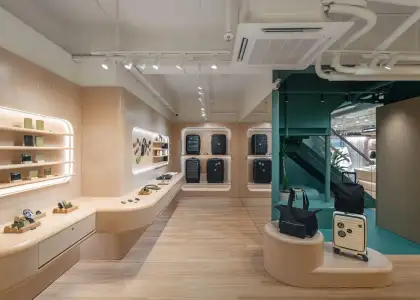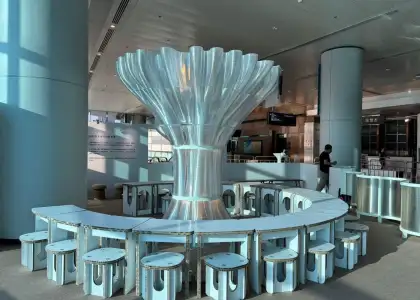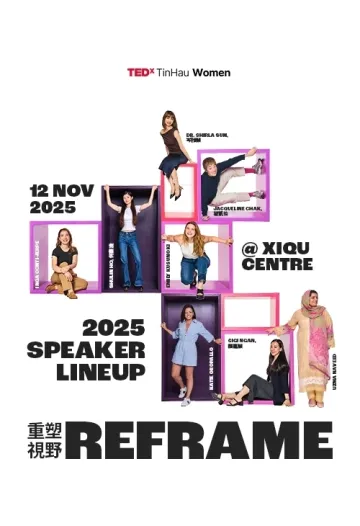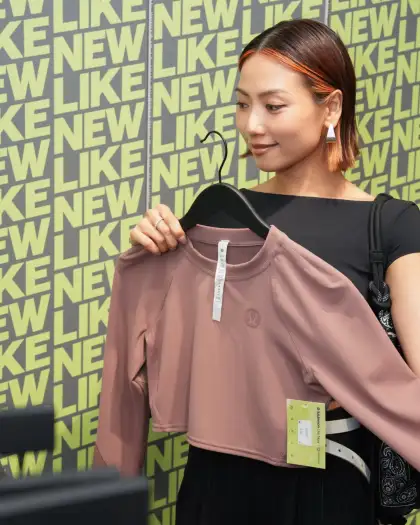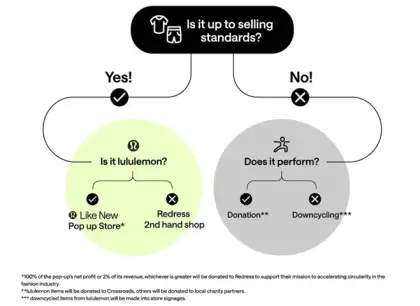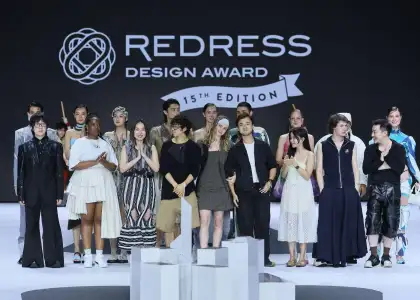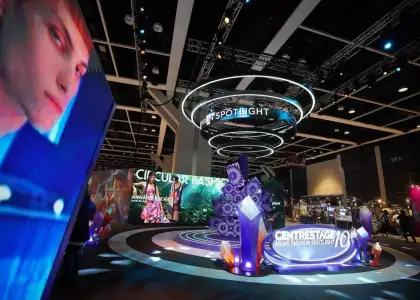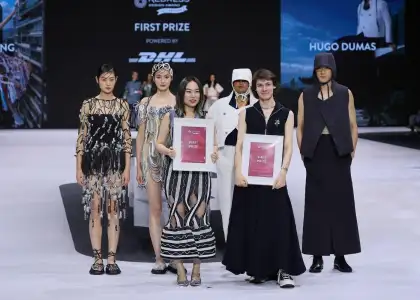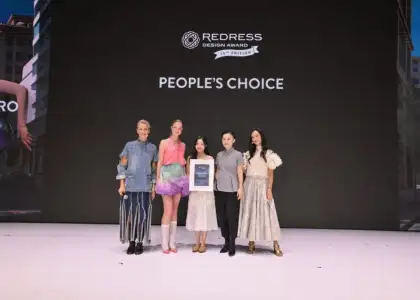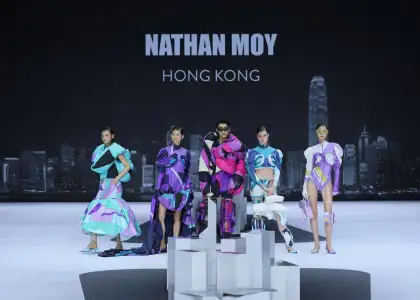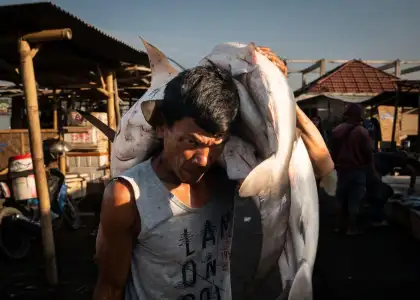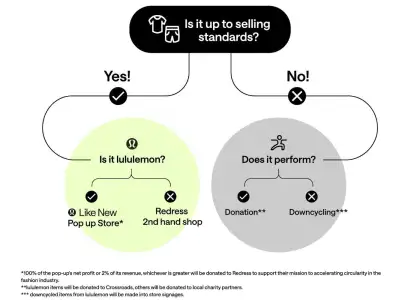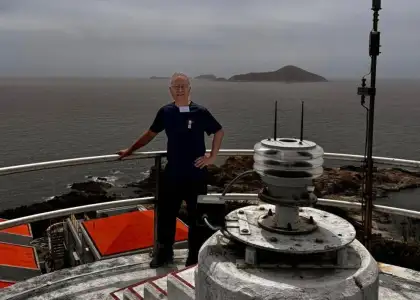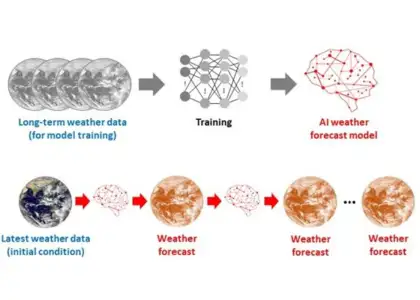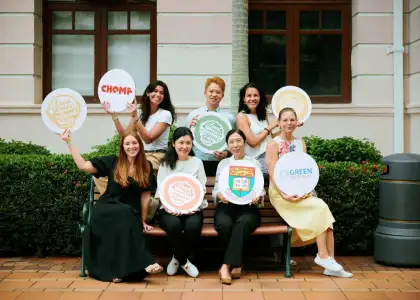Earth-Friendly Fashion: Redress Founder Christina Dean on Sustainability in Style
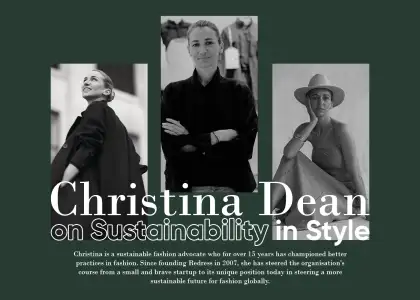
An internationally published ex-journalist, ex-dentist, and female founder of a social impact business, Christina Dean also happens to be an accoladed fashion figure who is spearheading the move towards sustainable fashion in Hong Kong. Upon the U.K. native’s first brush with textile pollution during her time covering topical issues around Asia, Christina was driven to build an initiative that could target the problem from all angles. Then in 2007, her sustainability-focused NGO Redress was born.
For nearly two decades now, Redress has been Christina’s point of connection to Hong Kong fashion lovers, allowing her to open the public’s eyes to the repercussions of wasteful practices that are deeply woven in the industry, and to advocate for better alternatives. From education efforts targeted at designers, to leading businesses and industry professionals to adopt conscious streamlined manufacturing and distribution, to clothing swap pop-ups for the public, her impact has reached all corners of fashion.
Since Redress’ growing success, Christina has introduced the Redress Design Awards in 2011, welcoming applicants from worldwide to the largest sustainable fashion design competition on the globe, as well as her luxury upcycling label The R Collective in 2017, followed by the beautifully curated The Redress Closet secondhand shop in Sham Shui Po. Reflecting on the much-anticipated shift amongst the upper rungs of the field of fashion, whilst looking back on how the Redress designer community has blossomed over the years, Christina chats to The Beat Asia on the major movements she’s witnessed so far and her plans for how to keep the momentum on sustainable fashion going strong.
It’s been over a decade since you founded Redress, how has the journey been so far? What have been the biggest changes seen in the sustainable fashion industry since the beginning of your career?
The journey since I founded Redress in 2007 has been phenomenal. During this time clothing consumption and waste has exploded as has, unexpectedly, the industry and societies’ calls to clean up fashion’s act. So, our sustainability journey has been a thrilling ride—as fashion is in the hot seat—so we’ve never had a dull moment!
The biggest change I’ve witnessed today compared with 2007 is that sustainability in fashion is now real, mainstream, centre stage, and in your face! Businesses, and all of us if we are honest, know that we have to change.
Much of this change in perception and action is in reducing fashion’s waste, which is core to Redress’ mission. Back in the day, fashion industry professionals didn’t have clarity, or even much interest, in their excess materials, and few industries put much focus on it. Waste was essentially swept under the carpet. This has changed. Today, you can talk to businesses about textile waste because it has become a big issue in terms of how much of it there is to deal with, and also because of the increased concern from industry stakeholders about incineration and landfilling.
We’ve also seen the “rise” of the circular economy, even though the concept — where nothing goes to waste and everything is reused and recycled — is as old as the earth itself! Nature is the best example of a circular economy, and it’s only been recently that fashion, and most industries, have looked to nature for clues to get us out of this mess. Circularity has become this knight in shining armour that teases to save fashion. For example, creating recycled fibres is one way to feed the fashion industry. But we can’t get too lured by circularity, since currently less than 1% of clothing waste is actually turned back into clothes; so we have a huge way to go towards increasing circularity in fashion. There’s not a moment to lose!
What were some major challenges you faced in sharing sustainable fashion values in Hong Kong? How have local attitudes changed?
One of the biggest challenges is convincing consumers that they actually have a responsibility to change. The problem with clothes is that they communicate who we are to the world and so we have a bit of an ethical blind spot when it comes to clothing, where we want to buy and change our clothes frequently to satisfy complex emotional needs. So convincing people is just that little bit harder when fashion is “supposed” to be fun, creative, and a form of expression, which it is, alongside also being a major global polluter.
That said, we’re all more eyes open wide on each of our impacts, which is stimulated by the ongoing tragic environmental catastrophes that we see every time we turn the news on, as well as social issues and disparities that keep our hearts open. I do believe we all want to do better, and this means changing our attitude towards our closets; we’re now willing to look deeper into what we buy and what our wardrobes say about the world we live in.
What has been some “wow!” moments for you in terms of technological developments or new techniques in environmentally friendly design? Is there something that’s easily achievable or widely adopted now that would seem unthinkable in your earlier days?
They say “Necessity is the mother of invention” and as fashion has been pushed, we’ve seen staggering inventions, so the “wow” comes in how many new solutions are being developed from every corner of the earth. We’re seeing new fibres made from food waste like citrus peels and coffee waste, materials made from spiders’ webs and mushrooms, and even wearable technology. We’re seeing digital technology embed itself into the supply chain, via blockchain and robotics, and at the design board, via 3D virtual design tools, and even virtual clothes for consumers to “wear” instead of physical garments.
That said, the elephant in the room — and the thing that needs to be widely adopted — is the need to buy less, buy better, including the products made from technological advancements, and keep our clothes in use for longer. Some of the most basic and impactful solutions to fashion’s environmental crisis are the very things that our grandparents could have told us years ago!
What was the inspiration behind establishing the Redress Design Award?
It’s thought that 80% of a product's environmental impact is decided at the design stage. When I founded Redress in 2007, so little education was being developed and delivered for fashion designers. In wanting to transform fashion, we needed to transform the industry’s professionals, and so we went straight to the point, straight to the design board.
With the Redress Design Award, we take a serious view about the long-term need to educate sustainable designers. The whole fashion industry and academia must wake up now and take educating designers seriously. From our base in Hong Kong, we’ve educated in several different languages thousands of designers globally, who we consider more as activists than artists. As we look forward, we increasingly look to double down on efforts to access more Asian countries, which are home to the world’s greatest apparel producing and consuming markets.
What should contestants of the Redress Design Award expect in their future? How does being part of the Redress community affect a designer’s career path or design journeys?
The finalists and all designers engaged in this topic should expect fulfilling and busy careers. There is a huge need for skilled designers within sustainability and so getting heads down will reward those with great opportunities. The smartest people see a crisis, and turn it into an opportunity, and our designers are proof of this.
In terms of our ongoing work with our contestants, all semi-finalists and finalists join the Redress Design Award Alumni Network, which offers designers exciting industry opportunities to develop careers in sustainable fashion design, including brand collaborations, networking with industry professionals, and other support. Our alumni have gone on to create their own brands, collaborate with big names in fashion, work as consultants, and more, with the Redress community supporting and spotlighting their work along the way.
What do you foresee in the future of the fashion industry?
The big areas for the future are reducing fashion’s carbon impact and driving circularity. It’s no surprise that the success of both of these factors [is] pretty much joined at the hip. If we can unlock the circular economy, we will reduce carbon impact.
Climate and carbon impacts remain the master that will drive fashion’s C-suite decisions for years to come, because carbon reduction is central to all stakeholders, and is also top of mind for most consumers who are concerned with “sustainability.” So the industry has to take these issues seriously, otherwise it will run us to the ground.
This interview has been edited for length and clarity.
Subscribe to The Beat's newsletter to receive compelling, curated content straight to your inbox! You can also create an account with us for free to start bookmarking articles for later reading.













